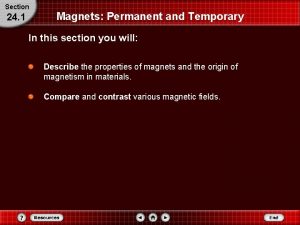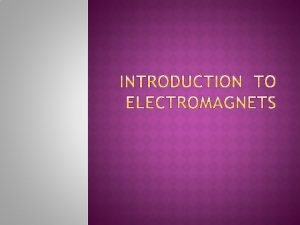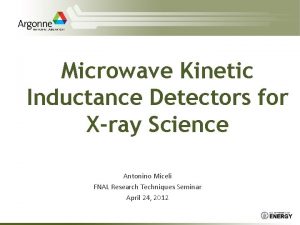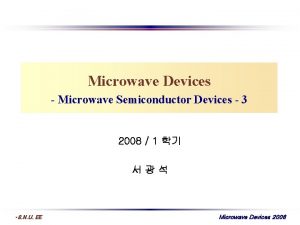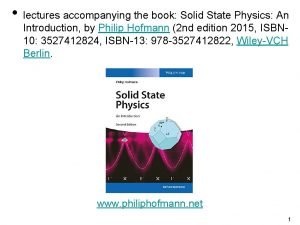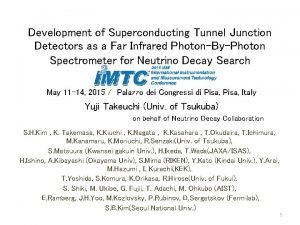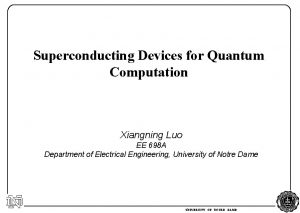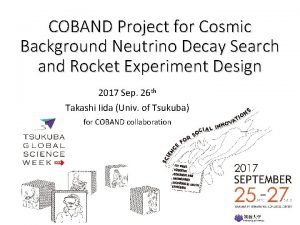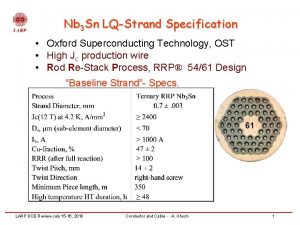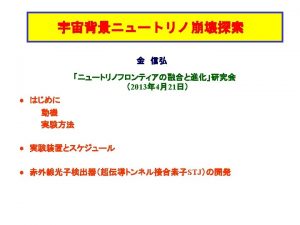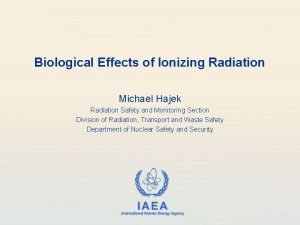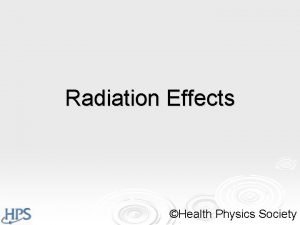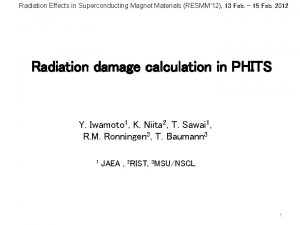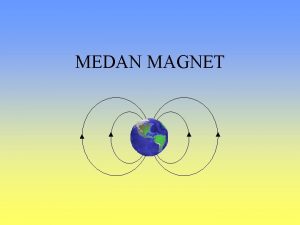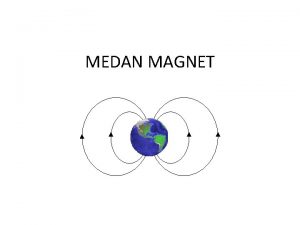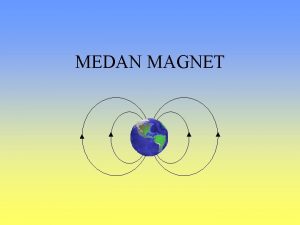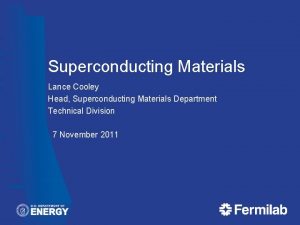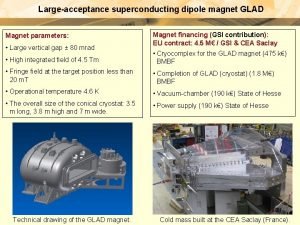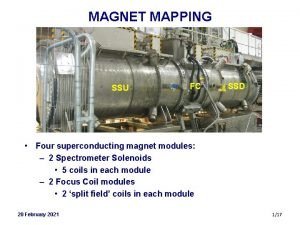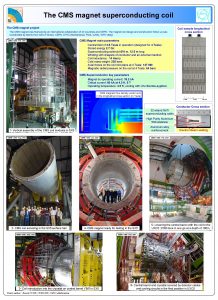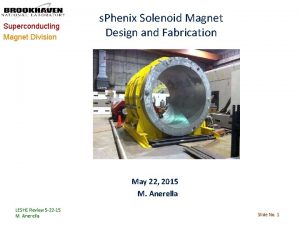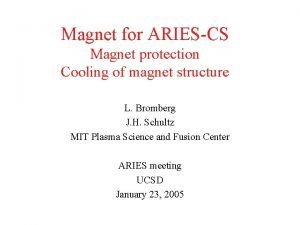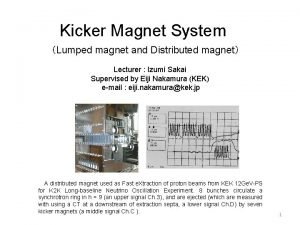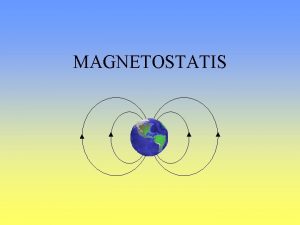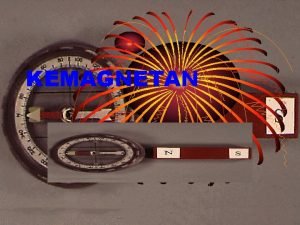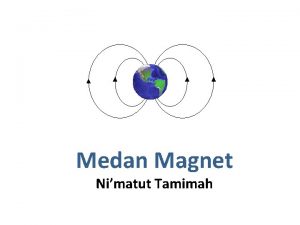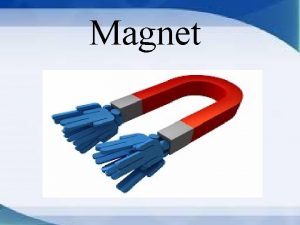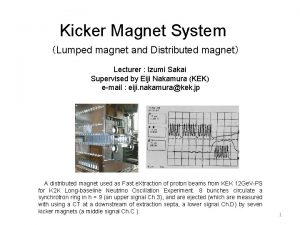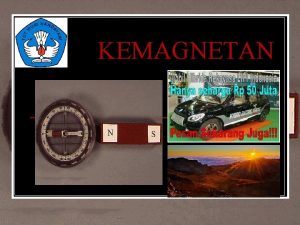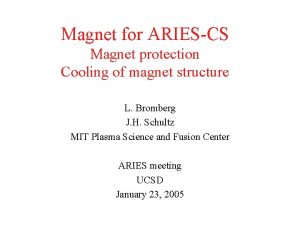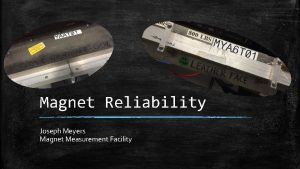Radiation Effects in Superconducting Magnet Materials RESMM12 13






















- Slides: 22

Radiation Effects in Superconducting Magnet Materials (RESMM'12), 13 Feb. – 15 Feb. 2012 Radiation damage calculation in PHITS Y. Iwamoto 1, K. Niita 2, T. Sawai 1, R. M. Ronningen 3, T. Baumann 3 1 JAEA , 2 RIST, 3 MSU/NSCL 1

contents ØIntroduction ØRadiation damage model in PHITS ØRadiation damage calculation • proton, heavy-ion, neutron incidences ØExample of heat calculations ØSummary 2

Introduction As the power of proton and heavy-ion accelerators is increasing, the prediction of the structural damage to materials under irradiation is essential. The average number of displaced atoms per atom of a material DPA : DPA=f t s s : the Displacement cross-section. ft : the irradiation fluence. For example, 10 dpa means each atom in the material has been displaced from its site within the structural lattice of the material an average of 10 times. The Monte Carlo particle transport code systems have been developed for the radiation shielding design, radiation damage calculation, and so on. PHITS, MARS, FLUKA, MCNPX… 3

Introduction ~Overview of PHITS~ Particle and Heavy Ion Transport code System Development JAEA (Japan), RIST (Japan), KEK (Japan), Chalmers Univ. Tech. (Sweden) Capability Transport and collision of various particles over wide energy range in 3 D phase space with magnetic field & gravity neutron, proton, meson, baryon electron, photon, heavy ions up to 100 Ge. V/n Application Fields Accelerator Design http: //phits. jaea. go. jp Radiation Therapy Space Application available from NEA databank 4

Introduction ØComparison old PHITS with SRIM is most famous code in radiation damage study. Ø Coulomb scattering is implemented. Ø No nuclear reactions in SRIM. Coulomb scattering in PHITS was not correct. Calculated results by old PHITS are much smaller than SRIM one. Purpose of this study ØImprovement of radiation damage model ØRadiation damage calculations using improved PHITS • Charged particle incidence • Reactor neutrons and 14 Me. V neutrons incidence 5

contents ØIntroduction ØRadiation damage model in PHITS ØRadiation damage calculation • proton, heavy-ion, neutron incidences ØExample of heat calculations ØSummary 6

Overview of radiation damage model in PHITS (1) Transport (2)Energy transfer to target recoil atom by Coulomb scattering (3)Cascade damage approximation projectile target atom Secondary particle by nuclear reaction Recoil atom by Coulomb target Recoil atom by nuclear elastic scattering 7

Radiation damage model in PHITS(1) (1)Transport (2) Energy transfer to target recoil atom with Coulomb scattering (3)Cascade damage approximation projectile Secondary particle by nuclear reaction Recoil atom by nuclear elastic scattering Models in PHITS Collision distance between particles Total reaction cross section produced by systematic formula Stopping power d. E/dx and ranges SPAR based on Bethe formula Nuclear reaction E>20 Me. V, all particles Intra-nuclear cascade model E<20 Me. V, low energy neutron Nuclear data, event generator 8

Radiation damage model in PHITS(2) Improvement (1)Transport (2) Energy transfer to target recoil atom with Coulomb scattering projectile Coulomb elastic scattering secondary (3)Cascade damage approximation Ep : kinetic energy, (Z 1, M 1) T: transferred energy, (Z 2, M 2) Recoil atom by Coulomb scattering The Coulomb scattering part, which alone leads to the deflection of the projectile and secondary, is described by classical scattering theory using the screening functions f(t 1/2). Thomas-Fermi l=1. 309, m=1/3, q=2/3 ØDimensionless collision parameter t= Dimensionless energy ε= ØTransferred energy from projectile and secondary to target atom 9

Radiation damage model in PHITS(3) Improvement (1)Transport (2) Energy transfer to target recoil atom with Coulomb scattering (3)Cascade damage approximation Damage energy Number of defects developed by NRT M. J. Norgett, M. T. Robinson and I. M. Torrens: Nucl. Engineering and Design, 33, 50 (1975). Integrating using dimensionless collision parameter t Number of defects developed by NRT Td: the value of the threshold displacement energy. 30 e. V for Cu and 90 e. V for W 10

contents ØIntroduction ØRadiation damage model in PHITS ØRadiation damage calculation • proton, heavy-ion, neutron incidences ØExample of heat calculations ØSummary 11

Comparison new PHITS with other code DPA=f t sdamage MARS result: Courtesy Nikolai Mokhov MARS also folds with Coulomb scattering and nuclear reaction. ØAgreement is very good except for old PHITS. 12

Displacement cross section to target depth ØThe beam range in materials is less than the mean free path for nuclear reactions. ØNuclear reactions occur before stopping range is reached. ØThe curves show the characteristics of well-developed hadronic cascades. u. Damage calculations without nuclear reaction lead to sever underestimation where projectile energy is high enough to create nuclear reactions. 13

Displacement cross section using PHITS for proton, 3 He, 48 Ca and 238 U Dash line: Radiation damage produced by recoil target atom created by projectile. ØFor proton and 3 He beams, contribution of Coulomb scattering by recoil atom created by the secondary particles increases with energies. ØFor 48 Ca and 238 U, the contribution of recoil atom created by the secondary is small. ØDisplacement cross section of heavy ion is much higher than that of light ion. 14

Radiation damage for neutron (1) Transport (2)Energy transfer to recoil atom with Coulomb scattering (3)Cascade damage approximation (1) Transport neutron Secondary particle by nuclear reaction neutron Recoil atom by nuclear elastic scattering target atom Recoil atom by Coulomb target Recoil atom 15

Cross sections for neutron incidence on Al ØElastic scattering is dominant below 1 Me. V. ØNuclear reaction is dominant above 10 Me. V. 16

Example of dpa calculation Particle production in target by PHITS Calculation condition KUR neutrons Reactor neutrons in Kyoto U. target Al: 1 mmx 1 mm x 50 mm 14 Me. V neutrons Al target 14 Me. V neutrons ØElastic scattering and capture are dominant. DPA distribution in target KUR neutrons 14 Me. V neutrons PHITS fit ØPHITS can calculate detail dpa distribution in a target. ØSRIM code cannot calculate dpa for neutrons. ØDPA value decrease with depth, exponentially. 17

contents ØIntroduction ØRadiation damage model in PHITS ØRadiation damage calculation • proton, heavy-ion, neutron incidences ØExample of heat calculations ØSummary 18

Benchmark test of HEAT(1) : compared with KEK experiment Proton beam at 12 Ge. V Exp. and Cal. by H. Ohnishi et al. Nucl. Instr. and Meth. A 545 (2005) 88. 12 Ge. V MCNPX: calculated by N. Matsuda PHITS results give good agreement with the experimental data. Heat

Benchmark test of HEAT(2) : compared with RIKEN experiment PHITS calculation and experiments for Heat load to the STQ 1 cryostat u. Calculation model of the Big. RIPS separator u. Calculated flux intensity of 48 Ca beam at 345 Me. V/nucleon particle around STQ 1: Superconducting triplet pole neutron proton nuclei Exp. and Cal. by T. Ohnishi et al. Progress in Nuclear Science and Technology (2011) 416. Neutrons are produced at the target, and pass through STQ 1. 20

Benchmark test of HEAT(2) : compared with RIKEN experiment Heat load distribution around STQ 1 Heat load mainly distributes at the inner duct. u. Experimental condition and measured heat load to the STQ 1 cryostat Heat load(PHITS) [W] 12. 0 63. 8 45. 9 34. 4 Estimated results are about 1. 3 - 1. 5 times larger than the measured heat loads. 21

Summary ØThe radiation damage model using Coulomb scattering in PHITS has been improved. ØDamage calculation only by recoil target atom directly created by the projectile lead to sever underestimation where projectile energy is high enough to create nuclear reactions. ØEnergy distributions of particles produced by elastic scattering and nuclear reactions are important to determine the DPA values. ØPHITS is a powerful code to calculate DPA value and heat load to the material. 22
 What happens if you break a magnet in half
What happens if you break a magnet in half Permanent and temporary magnet
Permanent and temporary magnet Cara membuat magnet permanen
Cara membuat magnet permanen Transition edge sensor
Transition edge sensor Superconducting tunnel junction
Superconducting tunnel junction Superconducting electronics
Superconducting electronics Ginzburg landau
Ginzburg landau Stj
Stj Western superconducting
Western superconducting Superconducting devices in quantum optics
Superconducting devices in quantum optics Coband
Coband Youtube.com
Youtube.com Oxford superconducting technology
Oxford superconducting technology Superconducting tunnel junction
Superconducting tunnel junction Michael hajek
Michael hajek Cancer treatment
Cancer treatment Effect of radiation on chromosomes
Effect of radiation on chromosomes Effects of light on smart and modern materials
Effects of light on smart and modern materials Direct materials budget with multiple materials
Direct materials budget with multiple materials Useful and harmful example
Useful and harmful example Natural materials and man made materials
Natural materials and man made materials Adopting materials
Adopting materials Cant stop the feeling trolls go noodle
Cant stop the feeling trolls go noodle
